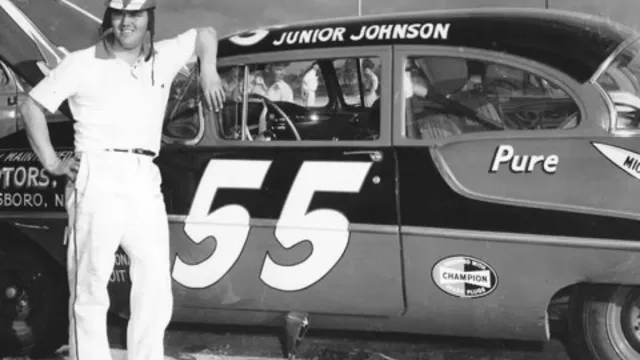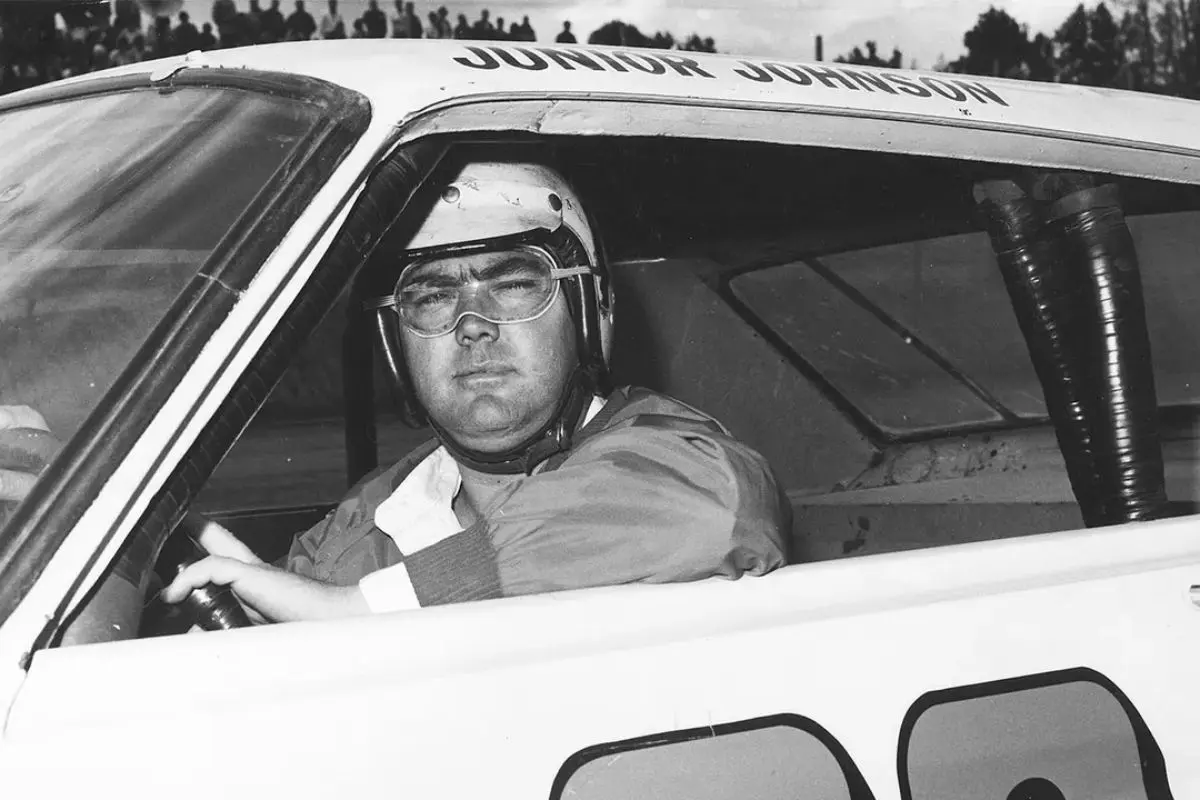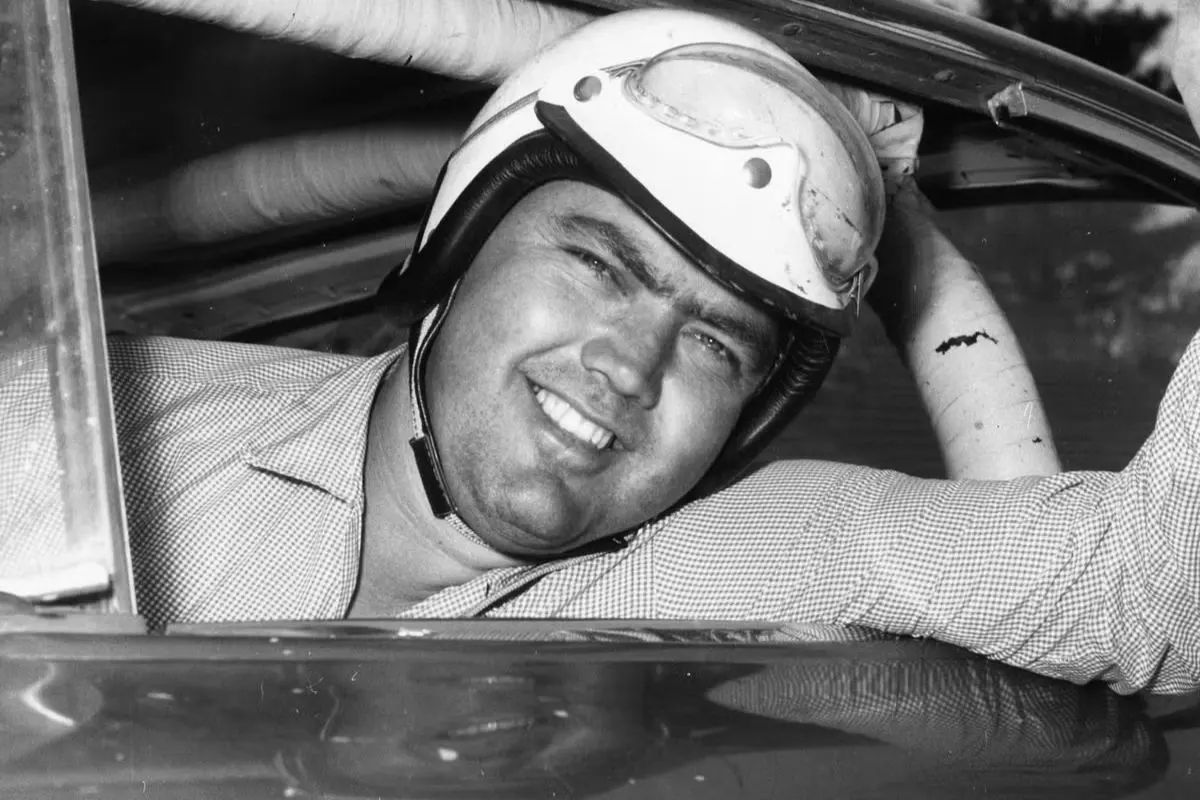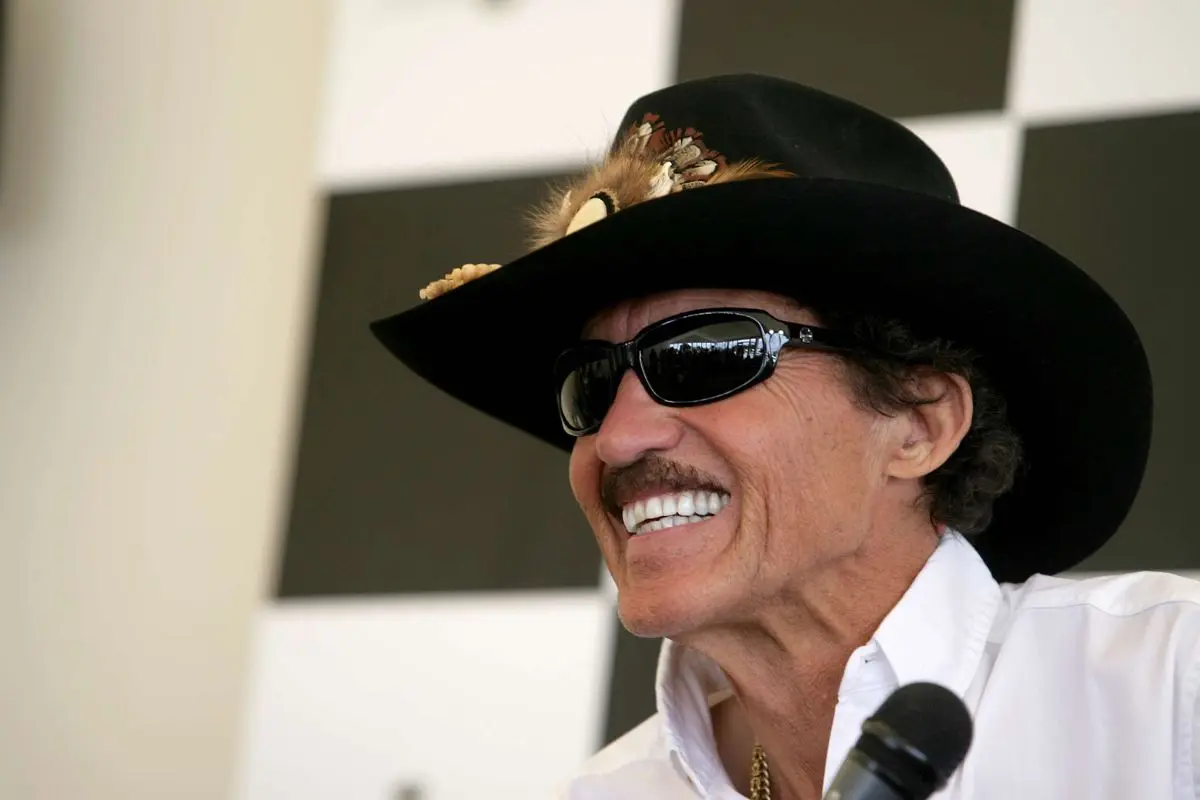Junior Johnson’s scandalous moonshine past is a story that’s as wild as NASCAR itself. Before becoming a racing legend, Johnson was involved in the dangerous world of moonshine running. But his journey didn’t stop there. After serving time, a surprising twist came when President Ronald Reagan stepped in to restore his rights. What happened next changed NASCAR history forever.
Key Highlights
- Junior Johnson’s early life was heavily involved in moonshining, impacting his future NASCAR career and legacy.
- In 1956, Johnson was arrested for operating an illegal distillery, marking a turning point in his life.
- President Reagan granted Johnson a pardon in 1986, restoring his voting rights and public reputation.
- The pardon symbolized Johnson’s transformation from a moonshiner to a respected NASCAR icon.
- Reagan’s pardon of Johnson highlighted the intersection of sports, politics, and American cultural values.
NASCAR’s Golden Era and the Legend of Junior Johnson
The charm of NASCAR’s golden era in the 1960s is steeped in a rich fabric of competition, creativity, and the indomitable spirit of its drivers, with Junior Johnson standing as an emblematic figure of this vibrant period.
During this groundbreaking decade, NASCAR was not only about the adrenaline-fueled races but also the legendary personas who etched their names into motorsport lore. While Richard Petty often headlines discussions with his seven championships, it was figures like Junior Johnson who imbued the sport with a rebellious edge and a touch of mystique.
Johnson’s legacy is entwined with the core of NASCAR’s rise to prominence. Known for his bold driving style and inventive mechanical insights, he revolutionized techniques, particularly with drafting, which became a cornerstone of racing strategy. His contributions extended beyond the track, influencing both competitors and the evolution of race car engineering.
Johnson’s ability to read a race and his intuitive understanding of car dynamics turned him into a revered tactician among peers.
Despite not amassing a collection of championship trophies, Johnson’s impact was profound. His career victories and pole positions speak to a skill set that resonated through the sport, helping to shape its competitive landscape.
Beyond statistics, his presence in NASCAR’s golden era encapsulated an unyielding pursuit of excellence and mastery.
Junior Johnson’s narrative, steeped in both triumph and controversy, enriches the mosaic of NASCAR’s storied history, celebrating a time when grit and ingenuity defined racing’s golden age.
Junior Johnson and the Moonshine Legacy
Rooted in a legacy of audacity and resourcefulness, Junior Johnson‘s connection to moonshine running is an indelible part of his storied past. Before the world of NASCAR claimed him as one of its legends, Johnson was deeply entrenched in the clandestine world of illicit liquor. His family’s involvement in the moonshine trade was not merely a side note; it was a defining influence that shaped his early years and career.
His father’s two-decade imprisonment emphasized the perilous nature of this underground business. However, it was in this environment that Johnson honed skills that would later catapult him to racing fame.
December 26, 1985: Junior Johnson was granted a presidential pardon by Ronald Reagan, forgiving his 1956 moonshining conviction
"It makes me feel like I'm finally finished with what happened. I'm just glad it's over." pic.twitter.com/UF0O2R6N2E
— nascarman (@nascarman_rr) December 26, 2024
Johnson’s expertise in car modification emerged from necessity. To outrun law enforcement, he creatively improved his vehicles’ performance. This included:
- Engine modifications: Increasing speed to outpace pursuers became an art form for Johnson.
- Aerodynamic adjustments: Removing windshield wipers and taping headlight openings shaved weight and reduced drag, providing a vital edge.
- Tactical evasion: Mastering the roads and backwoods paths became habitual, showcasing his innate driving skill.
Despite these skills, fortune did not always favor him. In 1956, Johnson’s operation met its demise when an illegal distillery was uncovered, resulting in a year-long incarceration in Ohio.
The consequences of his conviction transcended his time served, imposing civic restrictions that lingered beyond his release, particularly the loss of his right to vote. This period of his life, steeped in both defiance and creativity, not only demonstrates his resilience but also serves as a reflection of the life-changing power of adversity.
Ronald Reagan’s Presidential Pardon
Junior Johnson’s path from moonshine runner to NASCAR legend took an unexpected turn with a historic act of clemency from President Ronald Reagan. In 1986, Reagan granted Johnson a presidential pardon, a decision that symbolically closed a tumultuous chapter in Johnson’s life. This pardon restored Johnson’s right to vote, marking a notable shift from his past legal entanglements.
Johnson, reflecting on the closure the pardon provided, expressed relief and gratitude for ultimately moving beyond his 1956 moonshining conviction. “It makes me feel like I’m finally finished with what happened. I’m just glad it’s over,” he remarked, summarizing the profound personal impact of this presidential intervention.
The pardon was more than just a legal formality; it was a public acknowledgment of Johnson’s transformation from a notorious figure in the moonshine world to a respected icon in the racing community. The decision resonated deeply within NASCAR circles and beyond, highlighting the sport’s deep-rooted connection to American culture and history.
Ronald Reagan’s engagement with NASCAR was not confined to this singular act of clemency. His presence at Richard Petty’s celebrated 200th win further cemented his rapport with the sport and its personalities. Reagan’s interactions with NASCAR, including this pardon, emphasized his broader understanding of the sport’s cultural importance.
Johnson’s pardon remains a poignant reminder of redemption and the power of alternate chances. It highlighted the possibility of reconciliation with one’s past, allowing Johnson to fully accept his legacy as a NASCAR pioneer, free from the shadows of his early life.
Richard Petty’s Iconic 200th Win
Amid the roaring engines and passionate cheers at Daytona International Speedway, Richard Petty‘s legendary 200th victory stands as a tribute to his unparalleled skill and tactical expertise in NASCAR history.
This defining moment unfolded during the Firecracker 400, an event marked by intense competition, with 29 lead changes underscoring the race’s exhilarating unpredictability. Petty’s final victory was not just a testament to his racing ability but also reflected his deep understanding of strategy and split-second decision-making.
The pivotal moment came on Lap 158 after a crash brought out the caution flag. In those days, NASCAR rules dictated that the driver reaching the start-finish line initially under caution would be declared the winner.
“We ran down the front stretch, and I kept him high(…) If you get really close to a car, then you kind of bog it down, or it bogs you down. In other words, kind of stick together. When we got there, it was automatically going to put me in front because I was going to run a shorter distance than he did.” – Richard Petty
Petty, with his astute grasp of racing dynamics, executed a masterful maneuver to edge out his rival Carl Yarborough. As Petty later recounted, his technique involved:
- Positioning: He expertly positioned himself to keep Yarborough high on the track.
- Aerodynamics: By getting close, he effectively used the aerodynamic drag to his advantage, ensuring his car maintained speed.
- Track Strategy: Understanding the geometry of the track, Petty ran a shorter distance, giving him a critical edge.
President Reagan’s Historic Visit
As Richard Petty celebrated his landmark 200th victory at the Firecracker 400, the event’s significance was magnified by the presence of a distinguished guest: President Ronald Reagan. The convergence of political gravitas and sporting greatness transformed this race into a historic occasion, highlighting NASCAR’s growing stature in American culture. Reagan’s attendance marked the initial time a sitting U.S. president had attended a NASCAR race, symbolizing a powerful endorsement of the sport’s place in the national fabric.
The President’s involvement extended beyond mere attendance; he actively engaged with the race-day festivities. Following Petty’s exhilarating victory, Reagan joined the jubilant celebrations, mingling with drivers and fans alike, capturing the spirit of fellowship and competition that defines NASCAR. His presence lent an air of legitimacy and nationwide recognition to a sport deeply rooted in American tradition.
Adding a touch of informal charm to the day, Reagan participated in a post-race lunch featuring Kentucky Fried Chicken—a quintessentially American meal that resonated with the event’s down-to-earth vibe. This unpretentious dining choice emphasized Reagan’s ability to connect with everyday citizens, further endearing him to the NASCAR community and reinforcing his image as a leader in touch with the people.
The sight of a sitting president not only mingling with drivers but partaking in the celebrations amplified the race’s legacy, intertwining political history with sporting achievement. This iconic day at the Firecracker 400 stands as a monument to the enduring fascination of NASCAR and its place in the American story.
News in Brief: Junior Johnson’s Scandalous Moonshine Past
The intertwining of Junior Johnson’s moonshine legacy with the evolution of NASCAR and political history demonstrates a unique American narrative. Johnson’s past, emblematic of an era of rebellion and ingenuity, was not only pivotal to NASCAR’s identity but was also symbolically redeemed through Ronald Reagan’s presidential pardon. This act of clemency, coupled with Richard Petty’s 200th win during Reagan’s historic visit, highlighted a groundbreaking moment, celebrating a fusion of sportsmanship, redemption, and national pride within American culture.
ALSO READ: Junior Johnson’s Genius Drafting Strategy That Gave Him an Unmatched Advantage in NASCAR



